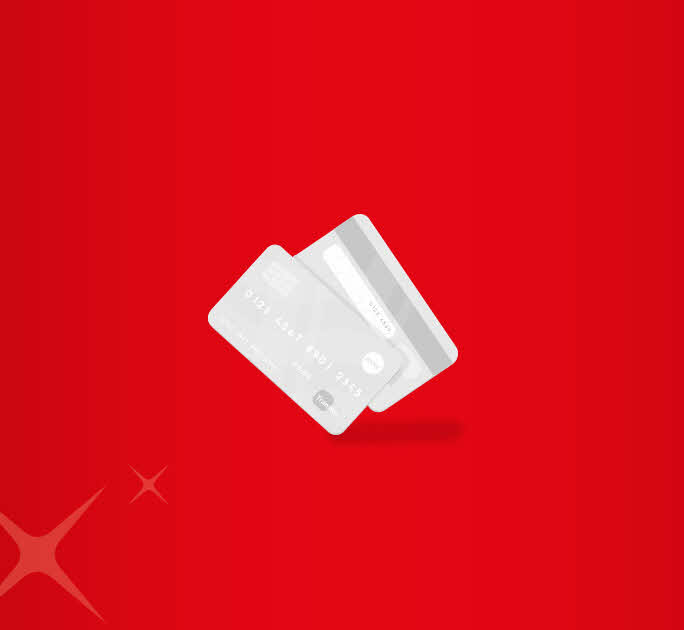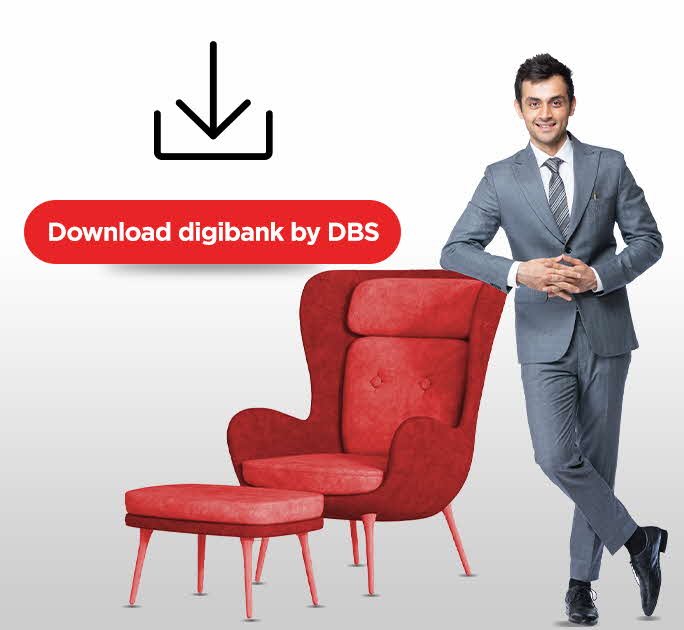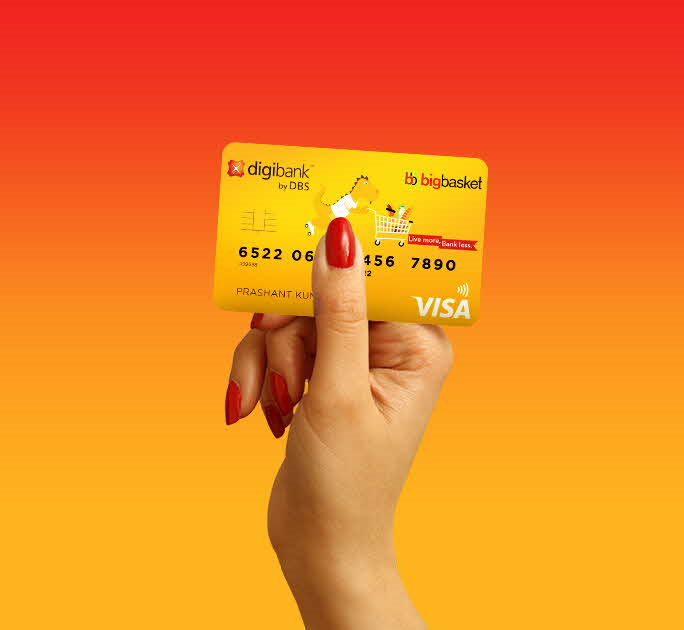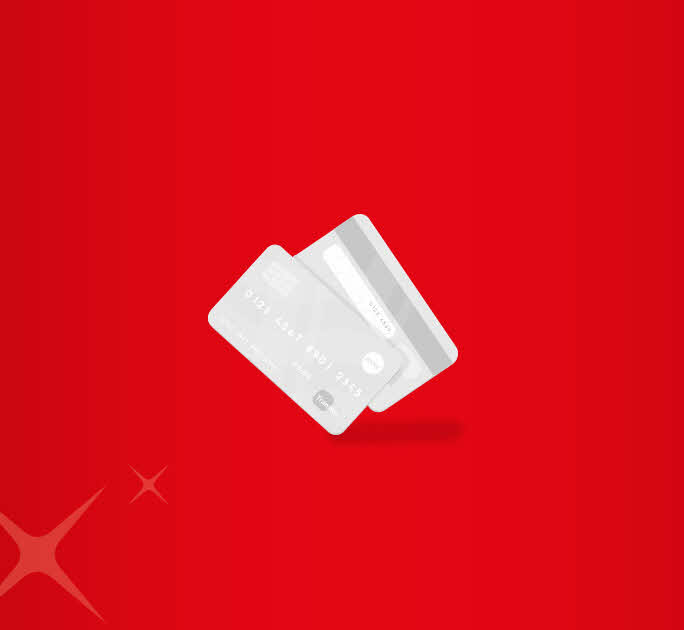- Save
- Invest
- Borrow
- Pay
- More
- Customer Services
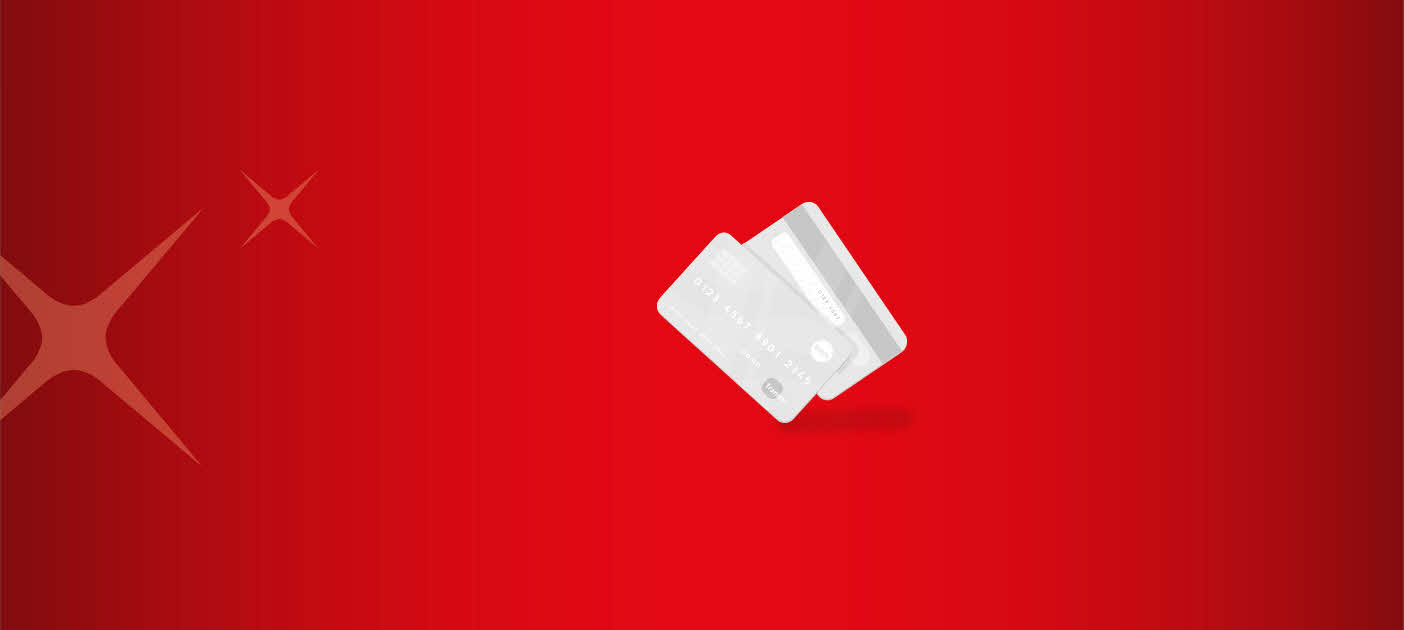
Difference Between Debit Card and Credit Card
Wondering what is the difference between debit card and credit card? Find out in this article.
Key Takeaways
- A debit card is linked to your bank account, and money is instantly debited when you use it.
- A credit card works like a loan, which you can repay on a fixed, future date.
- Credit cards usually involve interest payment on late repayments of outstanding bills.
- Banks offer debit cards as an accessible, complimentary facility, whereas you have to apply for credit cards.
- You can withdraw cash on both, but you have to pay interest on credit card withdrawals.
Introduction
Banking transactions are easy and convenient today, thanks to debit and credit cards. With debit cards, the bank debits the money from your linked account when you make a transaction. However, with credit cards, the bank adds the transaction amount to your line of credit and sends you a bill at a later date, giving you plenty of time to make the payment. While the two types of bank cards look the same, there are quite a few significant differences between a debit card and a credit card. Let us learn more about them, starting with their meanings.
Understanding Debit and Credit Card
Before comparing features, it is important to look at the credit card and debit card definition, as both serve different purposes in managing payments.
What is a debit card?
A debit card is a plastic card that gives you instant access to the funds in your account. Typically, banks provide you with an ATM-cum-debit card to withdraw money at ATMs. You can just as easily use the card to pay for purchases at brick-and-mortar stores or buy products online. Your bank issues you a debit card when you open bank account online or at a branch, and the card is linked directly to your account.
Key Features of Debit Cards
Debit cards offer a convenient way to access your bank funds without carrying cash. Understanding the features of debit card can help you manage money effectively.
- Direct Account Access
Your debit card is linked to your savings or current account, allowing instant withdrawals and payments. - Cashless Transactions
Use your card for in-store purchases, online shopping, and bill payments, reducing the need for physical cash. - ATM Withdrawals
Withdraw cash anytime from ATMs nationwide, often with additional features like mini statements. - Secure Transactions
Debit cards are protected by PINs, EMV chips, and two-factor authentication for online payments. - Contactless Payments
Many debit cards support tap-and-pay technology for quick, hassle-free transactions. - Expense Tracking
Every debit card transaction is recorded, making it easier to manage and monitor your spending. - International Usage
Some debit cards allow global transactions, making them useful for travel and online international purchases.
You can start using these benefits immediately by choosing to open bank account online with a trusted bank.
Advantages of Using a Debit Card
Using a debit card comes with several benefits that make managing your finances easier and more secure. Knowing the advantages of debit card can help you make informed choices for everyday spending.
- Instant Access to Funds
Debit cards provide direct access to your bank account, allowing quick withdrawals and payments without carrying cash. - Cashless Payments
Pay for purchases in-store, online, or for bills effortlessly, reducing the need to handle physical money. - Expense Tracking
Every transaction is recorded, helping you monitor spending and manage budgets efficiently. - Secure Transactions
Transactions are protected by PINs, EMV chips, and, in some cases, two-factor authentication for online payments. - Global Usage
Many debit cards can be used internationally for purchases and ATM withdrawals, making them convenient for travel. - Contactless Payments
Tap-and-pay technology enables faster, hassle-free transactions for everyday purchases.
Understanding the difference between debit card and credit card can further help you decide which option suits your financial needs.
Disadvantages of Using a Debit Card
While debit cards are widely used and very convenient, it is helpful to also understand the disadvantages of debit card usage when compared with credit cards:
- Credit History: Debit card usage does not build your credit score, which is often needed for future loans or credit products.
- Spending Limit: You can only spend the balance available in your account, which may be restrictive in emergencies.
- Charges: Certain services, such as international transactions or ATM withdrawals beyond the free limit, may attract fees.
What is a credit card?
A credit card has a 16-digit card number, expiry date, CVV, and signature strip. It allows you to borrow funds from the issuing bank for a short period, usually 30 to 45 days. The bank pays the merchant, and you repay the billed amount by the due date, either in full or in part, with interest on any balance. Unlike debit cards, credit cards are not directly linked to your bank account.
Key Features of Credit Cards
Before choosing one, it is important to know the key features of credit card that make it different from a debit card.
- Pre-set credit limit defining how much you can spend
- Interest-free period (usually 30–45 days) for repayments
- Flexibility to repay in full or partially
- Rewards, cashback, or loyalty points on transactions
- EMI conversion for larger purchases
- Accepted for domestic and international payments
- Additional security features like fraud protection and OTP verification
Advantages of Using a Credit Card
The main advantages of credit card use go beyond convenience, offering financial flexibility and added benefits.
- Provides short-term borrowing without using your savings
- Earn rewards, cashback, and travel benefits
- Widely accepted for online, offline, and international payments
- Convenient for managing emergencies and larger expenses
- Extra security and protection on transactions
Disadvantages of Using a Credit Card
- Interest and fees if balances are not paid in full
- Risk of overspending since it involves borrowed money
- Requires disciplined management to maintain a good credit score
- Some cards may have annual fees or foreign transaction charges
Debit Card vs Credit Card: A Comparison
Let us now understand what the difference between a debit card and credit card is.
Transaction Type
- Debit Card: Cash is debited instantly from your account.
- Credit Card: Allows transactions on credit; the bank pays first, and you repay later, with interest if delayed.
Issuance and Fees
- Debit Card: Usually issued free with a savings account; may have annual maintenance charges.
- Credit Card: Requires application, may include joining and yearly fees.
Application
- Debit Card: Provided automatically when you open a bank account.
- Credit Card: Requires ID, address proof, KYC, and evaluation of credit history and income.
Cash Withdrawal
- Debit Card: Withdrawals directly from your account, no interest, daily limit applies.
- Credit Card: Cash can be withdrawn up to a monthly limit, interest applies immediately.
Rewards and Benefits
- Credit Card: Offers rewards, cashback, travel perks, EMIs, and special discounts.
- Debit Card: Basic benefits, occasional cashback, mainly for daily spending.
Fraud Protection
- Credit Card: Stronger protection, zero liability on unauthorized charges, faster refunds.
- Debit Card: Secure, but fraud resolution may take longer since funds come directly from your account.
Impact on Credit Score
- Credit Card: Helps build and improve credit score with responsible use.
- Debit Card: Does not affect credit score, as it involves no borrowing.
Can Debit Cards be used as Credit Cards?
Technically, debit cards cannot be used as credit cards since the two cards function differently. With the former, money is debited from your card instantly upon making a payment, whereas with the latter, funds are not debited from your account until the credit repayment date. However, you can use your debit card to pay off your credit card bills.
When to Use a Debit Card
Debit cards are ideal for everyday expenses and controlled spending. Use a debit card when paying for groceries, fuel, utility bills, or dining out, as the money is deducted directly from your account.
They are also suitable for small online purchases or subscriptions where you want to avoid borrowing. For example, paying for a grocery shopping trip or topping up your mobile recharge are convenient uses of a debit card.
When to Use a Credit Card
Credit cards are best when you want short-term borrowing, rewards, or enhanced security. Use a credit card for larger purchases, travel bookings, or online shopping on international platforms. They are useful for situations where you need to pay later or spread payments through EMIs. For instance, booking a flight ticket, purchasing electronics, or paying for a hotel stay can be more convenient and rewarding with a credit card.
Explore DBS Bank Savings Account options that offer bank savings interest rates of up to 5.5% p.a.
How do debit cards and credit cards work?
While using both debit and credit cards at retail stores, you need to enter your PIN (Personal Identification Number) to complete the transaction. For online payments using credit vs debit cards, you have to enter the entire 16-digit card number, expiry date and CVV. In addition, you also need to input the OTP (One Time Password) sent by the bank or creditor to your registered mobile number to authenticate the transaction. Once you enter the PIN/OTP, the credit or debit transaction will be completed.
Conclusion
Once you learn the difference between debit cards and credit cards, you can make an informed decision about the right kind of card that works for you. Be it visiting your favourite restaurants or shopping centres or making online purchases, you can do it all with these cards, and without withdrawing cash from your account. Both cards can prove to be extremely helpful in different situations. So reach out to your bank and apply for both.
With the digibank by DBS app, you can open bank account in just a few minutes and start enjoying convenient banking right away. Download the app to begin.
*Disclaimer: This article is for information purposes only. We recommend you get in touch with your income tax advisor or CA for expert advice.

